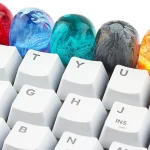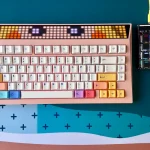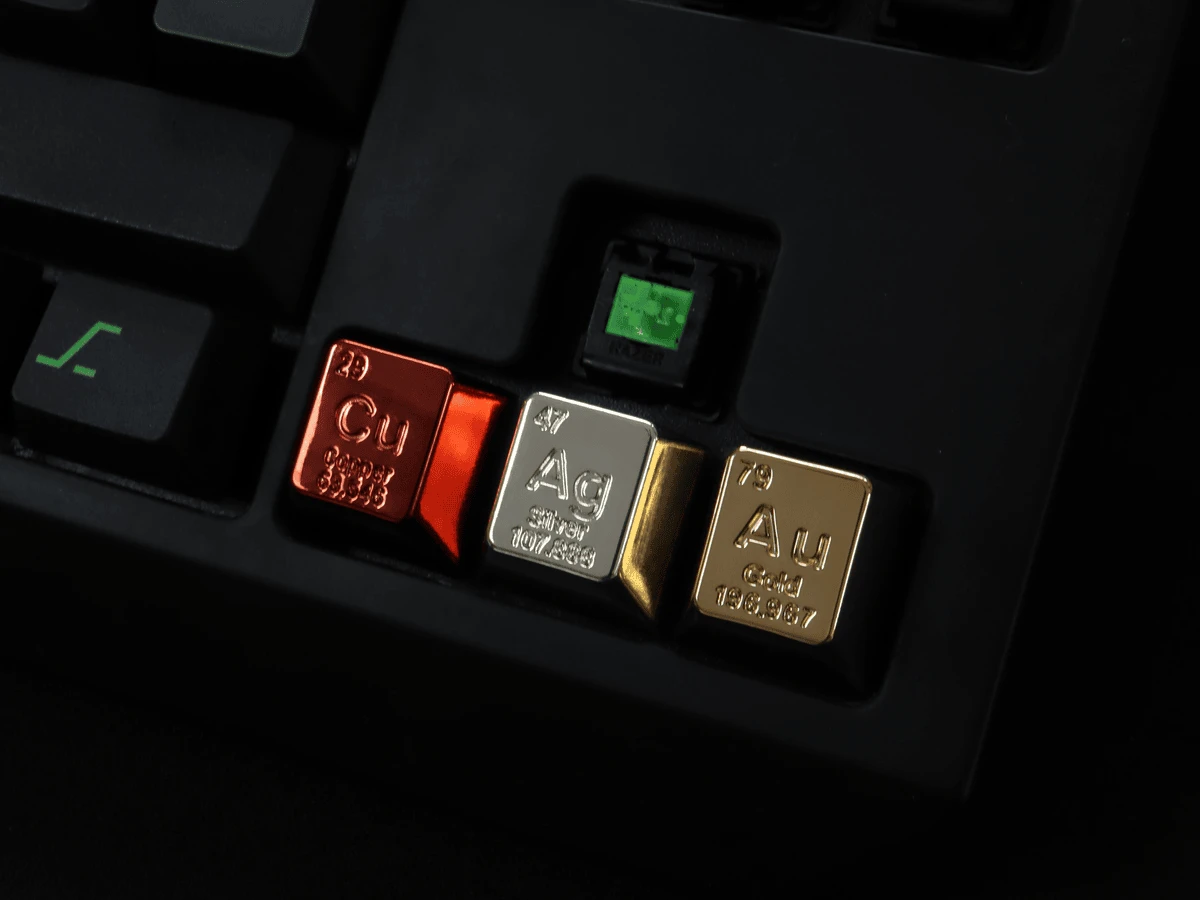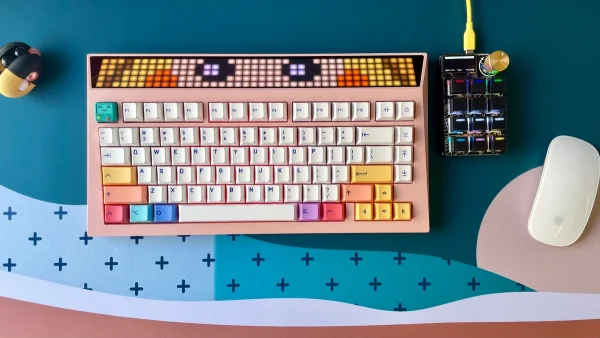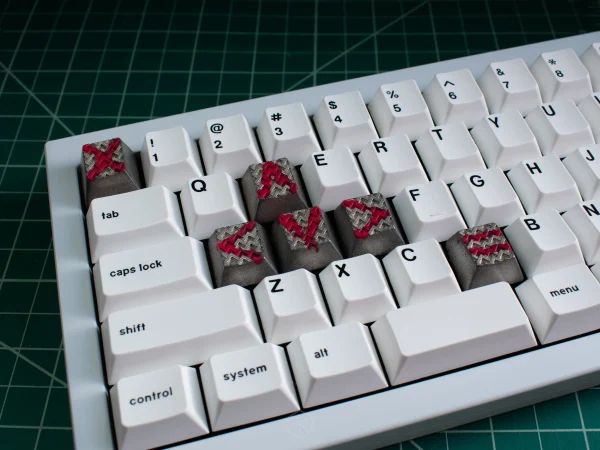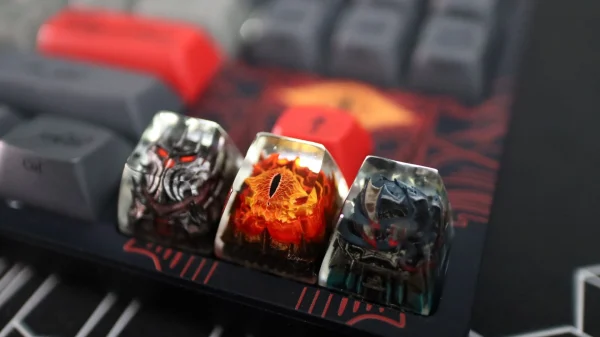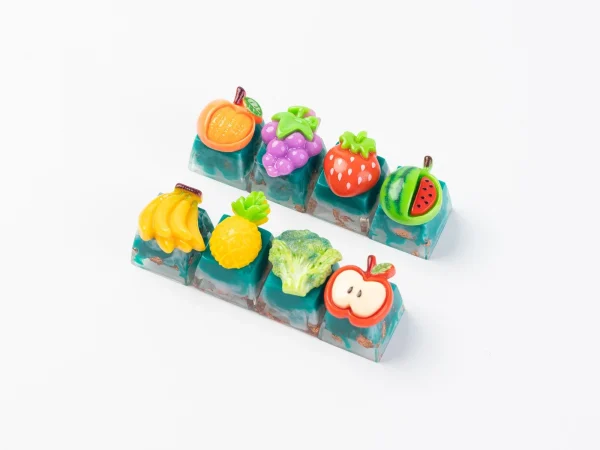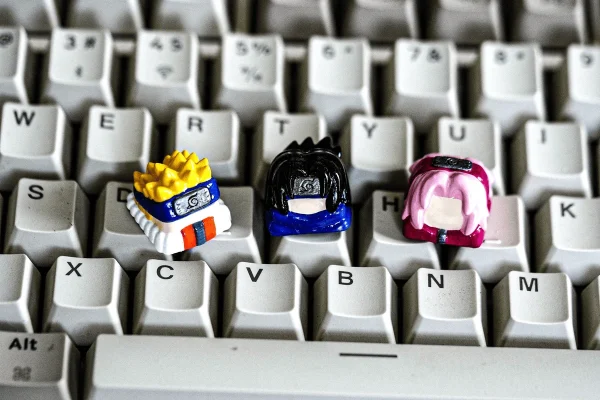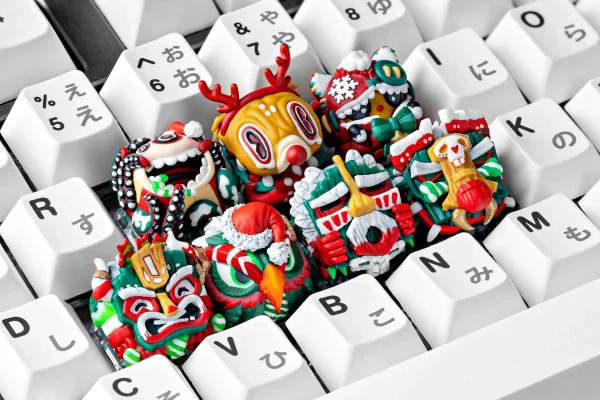3 Artisan Keycap Materials Explained: Resin, Clay & Metal
Learn key features of resin, clay, and metal artisan keycaps.
Artisan keycap materials explained dives into the most popular substrates—resin, clay, and metal—to help you understand what makes each material unique, durable, and visually striking. Whether you’re after vibrant, layered designs or solid, long‑lasting caps, this guide covers essential material properties and usage tips to elevate your mechanical keyboard setup.
Artisan Keycap Materials Explained
Artisan keycap materials range from malleable resins to handcrafted clays and precision‑machined metals, each lending distinct aesthetics and tactile experiences. Understanding these materials is crucial when selecting bespoke keycaps that balance beauty, durability, and compatibility. Below, we explore the three core artisan substrates and their standout features.
Resin Artisan Keycap Materials

What Is Resin?
Resin, typically epoxy or urethane, is a versatile polymer that captures vivid colors, intricate inlays, and embedded objects within artisan keycaps. High‑grade resins resist yellowing and scratching when properly cured, ensuring long‑term clarity and luster Thekapco.
Pros and Cons of Resin Keycaps
Pros:
Artistic Freedom: Allows for layered scenes, glitter, and miniature figures.
Customization: Easily dyed or pigmented for bespoke colorways.
Smooth Texture: Polished surfaces feel premium under fingertips.
Cons:
Fragility: Lower‑grade resin can crack under heavy use.
Weight Variance: Fully solid resin caps may feel heavier than stock caps.
Production Time: Hand‑pouring and curing increase lead times.
Clay Artisan Keycap Materials
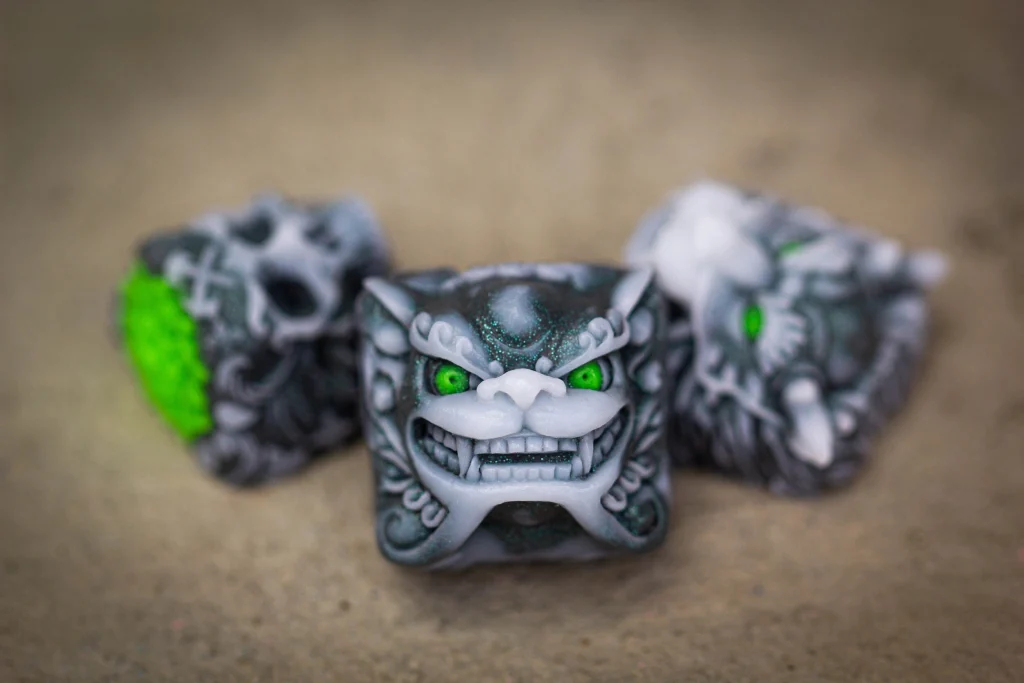
What Is Clay?
Artisan clays—such as polymer clay (e.g., Sculpey III) or air‑dry variants—offer an organic medium for hand‑sculpted keycaps, favored for their tactile textures and sculptural detail. These clays are shaped, baked, and often sealed to create small, detailed figures that captivate viewers.
Pros and Cons of Clay Keycaps
Pros:
Unique Sculptures: Enables highly detailed miniatures and reliefs.
DIY Friendly: Accessible for hobbyists to create one‑off designs at home.
Cons:
Fragility: Clay can chip or break if dropped.
Color Stability: Some clays may fade or darken over time.
Maintenance: Requires sealing to prevent moisture damage.
Metal Artisan Keycap Materials

What Is Metal?
Metal artisan keycaps—crafted from aluminum, brass, zinc, or stainless steel—add heft, durability, and a premium feel to mechanical keyboards. CNC machining or investment casting yields precise designs, while plating or anodizing provides color and corrosion resistance.
Pros and Cons of Metal Keycaps
Pros:
Longevity: Highly resistant to wear, scratches, and fading.
Tactile Weight: Offers satisfying heft and a distinct “ping” sound on actuation.
Premium Aesthetic: Polished or matte finishes exude luxury.
Cons:
Cost: More expensive due to material and machining costs.
Cold to Touch: Metal can feel chilly under fingertips.
Noise: Louder keystrokes may not suit all environments.
How to Choose the Right Material
Choosing between resin, clay, and metal depends on your priorities:
Aesthetic Detail: Pick resin for vibrant layers and embedded art.
Sculpture & Texture: Opt for clay to showcase handmade figures.
Durability & Weight: Select metal for toughness and premium heft.
Usage Frequency: Reserve fragile clays for accent keys; use metals or resins on high‑traffic keys.
Budget & Lead Time: Resin offers mid‑range pricing and availability; clay and metal may cost more and require longer production.
Conclusion
Understanding artisan keycap materials—from the versatility of resin, the artistry of clay, to the resilience of metal—ensures you choose keycaps that match your style, ergonomics, and durability needs.
Ready to upgrade? Explore MCraftin’s curated artisan keycap collection, featuring premium resin, clay, and metal designs, and personalize your keyboard today!


